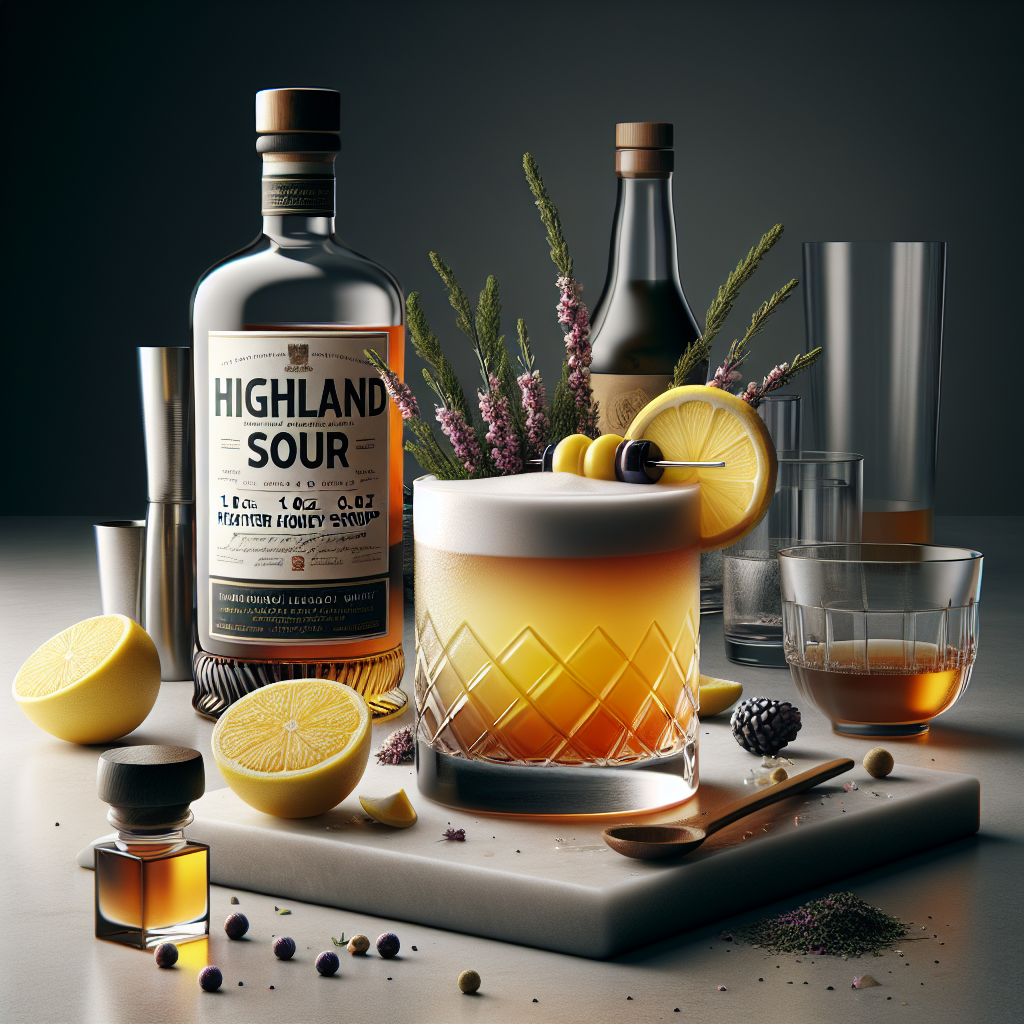Cocktail Terroir: The Geography of Flavor

Cocktail Terroir: The Geography of Flavor
Ever wondered why that sip of whiskey from the Highlands tastes different from the one you had in Kentucky? Or why that tequila from Jalisco sings a different tune than its cousin from elsewhere? Welcome, my thirsty friends, to the fascinating world of cocktail terroir! Just like in wine, the geography of where an ingredient is grown or produced can make a world of difference in the final taste of your cocktail. So, let's dive into the nitty-gritty of how climate, soil, and regional traditions shape the flavors we love.
What is Terroir?
Terroir is a fancy French term that essentially means "a sense of place." It's all about how the environment in which a plant is grown affects its flavor. In the realm of cocktails, this concept applies to spirits, herbs, fruits, and even the water used in distillation. It's not just about the raw materials but also the craftsmanship and traditions that evolve in different regions.
The Impact of Climate
Climate plays a starring role in the terroir of cocktail ingredients. Take whiskey, for instance. The cool, damp climate of Scotland's Highlands results in a slower maturation process for Scotch whisky, leading to complex, robust flavors with notes of peat and smoke. Contrast this with the warmer, more humid climate of Kentucky, where bourbon develops sweeter, fruitier notes thanks to the quicker aging process.
Case Study: Highland Whisky
The Highlands of Scotland are renowned for their whisky, and it's not just because of the stunning scenery. The cool, wet climate slows down the maturation process, allowing the whisky to develop deep, complex flavors. The use of peated malt in some Highland distilleries adds a smoky dimension that's uniquely Scottish.
If you want to taste the Highlands in a glass, try a Highland Sour:
Highland Sour

A cocktail that showcases the terroir of Highland Scotch whisky with local heather honey.
Ingredients:
- 2 oz Highland Scotch whisky
- 1 oz fresh lemon juice
- 0.5 oz heather honey syrup
- 1 egg white
- Angostura bitters for garnish
Instructions:
- Combine the Scotch whisky, lemon juice, heather honey syrup, and egg white in a shaker without ice. Shake vigorously for about 15 seconds to froth the egg white.
- Add ice to the shaker and shake again until well chilled.
- Strain into a chilled cocktail glass.
- Garnish with a few drops of Angostura bitters on top of the foam.
The Role of Soil
Soil composition is another critical factor in terroir. In tequila production, the type of soil in which the agave plant grows can significantly influence the final product. The red volcanic soil of Jalisco, Mexico, imparts a distinctive minerality to the agave, which translates into a more complex and earthy flavor in the tequila.
Case Study: Jalisco Tequila
Jalisco is the heartland of tequila, and it's no surprise given the region's perfect conditions for growing blue agave. The volcanic soil here is rich in minerals, which the agave plants absorb, resulting in a tequila with a unique earthy and slightly sweet profile. The traditional methods of production, including the use of stone ovens for cooking the agave, further enhance the regional character of Jalisco tequila.
Regional Traditions and Craftsmanship
Beyond climate and soil, the traditions and craftsmanship of a region play a crucial role in defining the terroir of cocktail ingredients. In Japan, for example, the meticulous attention to detail in distilling shochu results in a spirit that's as much a product of cultural heritage as it is of the local environment.
Case Study: Japanese Shochu
Shochu is a versatile spirit that can be made from a variety of ingredients, including rice, barley, and sweet potatoes. The meticulous process of fermentation and distillation, often done in small batches, allows for a wide range of flavor profiles. The use of traditional koji mold in the fermentation process adds a unique umami note that's distinctly Japanese.
Highlighting Terroir in Cocktails
So, how can you bring the magic of terroir into your cocktails? Here are some techniques to consider:
Use Locally Sourced Ingredients
Nothing screams terroir louder than using ingredients that are grown or produced right in your backyard. Whether it's a locally distilled spirit or a seasonal fruit from a nearby farm, these ingredients will add a unique regional flair to your drinks.
Experiment with Regional Spirits
Don't be afraid to venture beyond the usual suspects. Try using spirits from regions you're not familiar with. A mezcal from Oaxaca or a gin from the Netherlands can open up a whole new world of flavors in your cocktails.
Pair with Complementary Flavors
To really showcase the terroir of an ingredient, pair it with flavors that complement its unique characteristics. For example, the smoky notes of a Highland Scotch might pair beautifully with the sweetness of local heather honey, as we saw in the Highland Sour recipe above.
The Future of Cocktail Terroir
As the world of mixology continues to evolve, the concept of terroir is becoming increasingly important. More bartenders are seeking out unique, regionally specific ingredients to create cocktails that tell a story of place. From the rugged landscapes of Scotland to the sun-drenched fields of Jalisco, the geography of flavor is a journey worth taking.
So next time you're sipping on your favorite cocktail, take a moment to appreciate the terroir behind it. Whether it's the smoky peat of a Highland whisky or the earthy minerality of a Jalisco tequila, remember that every sip is a taste of the world's diverse and fascinating flavors.
Cheers to exploring the geography of flavor, one delicious cocktail at a time!